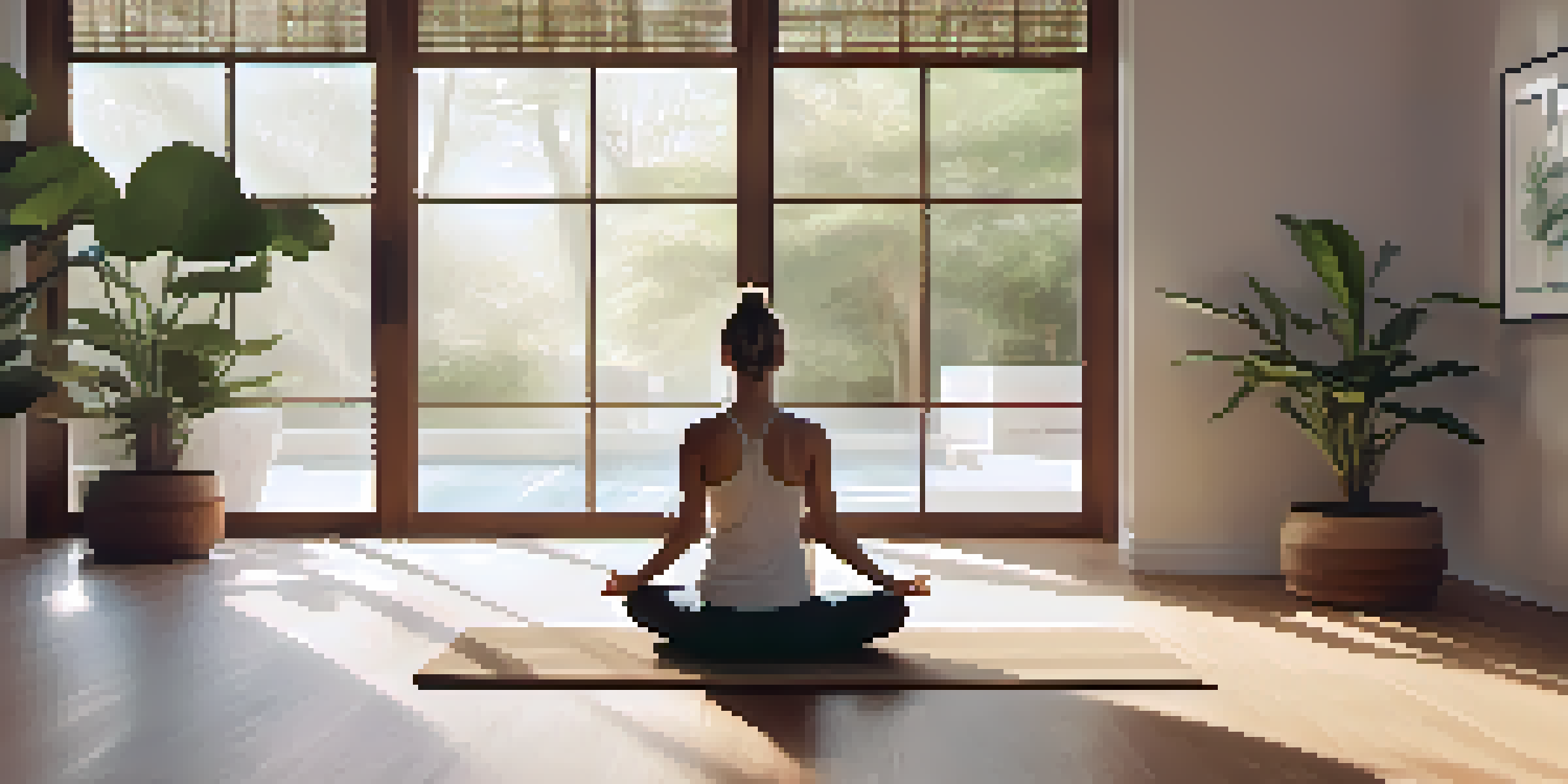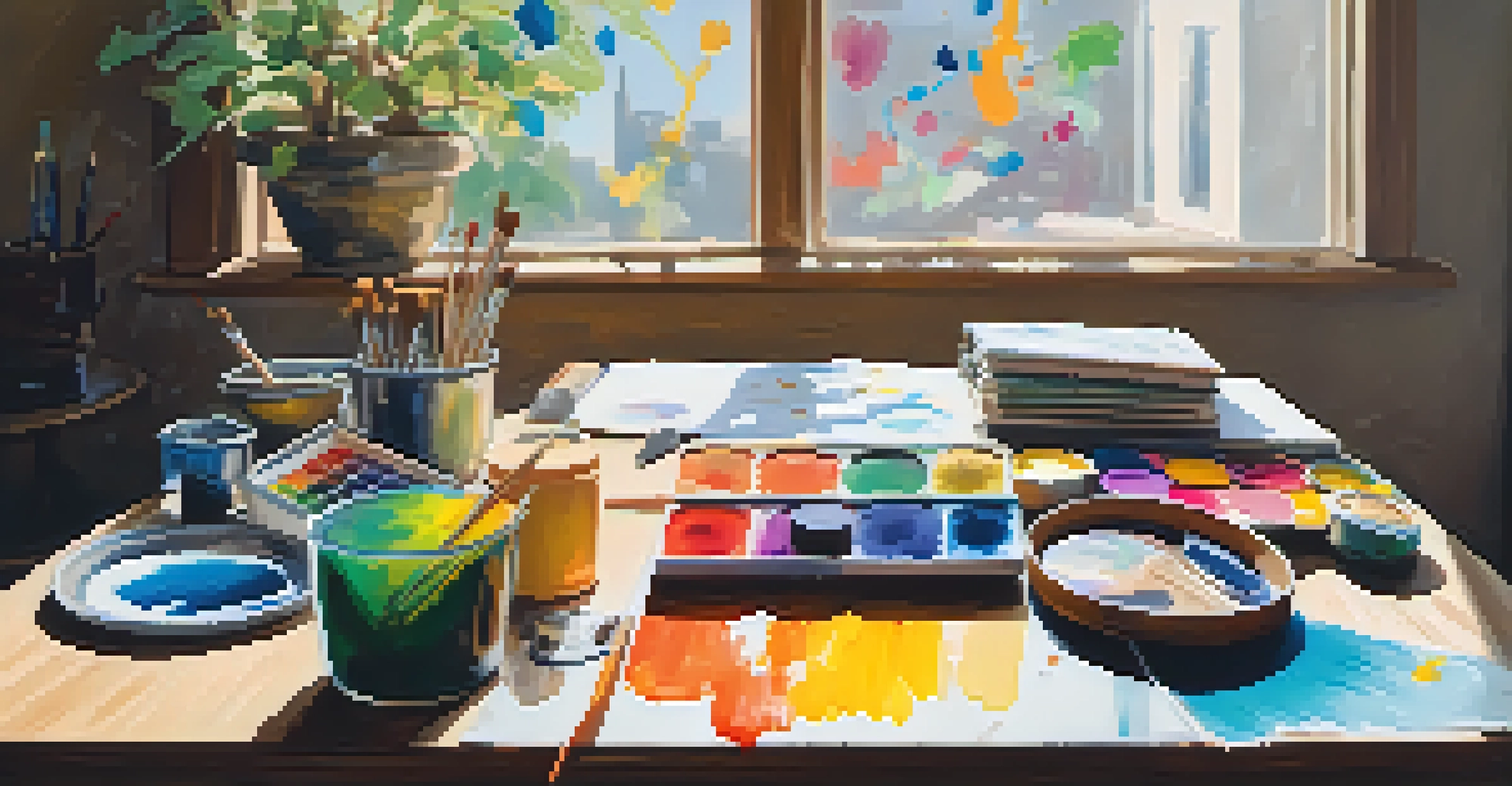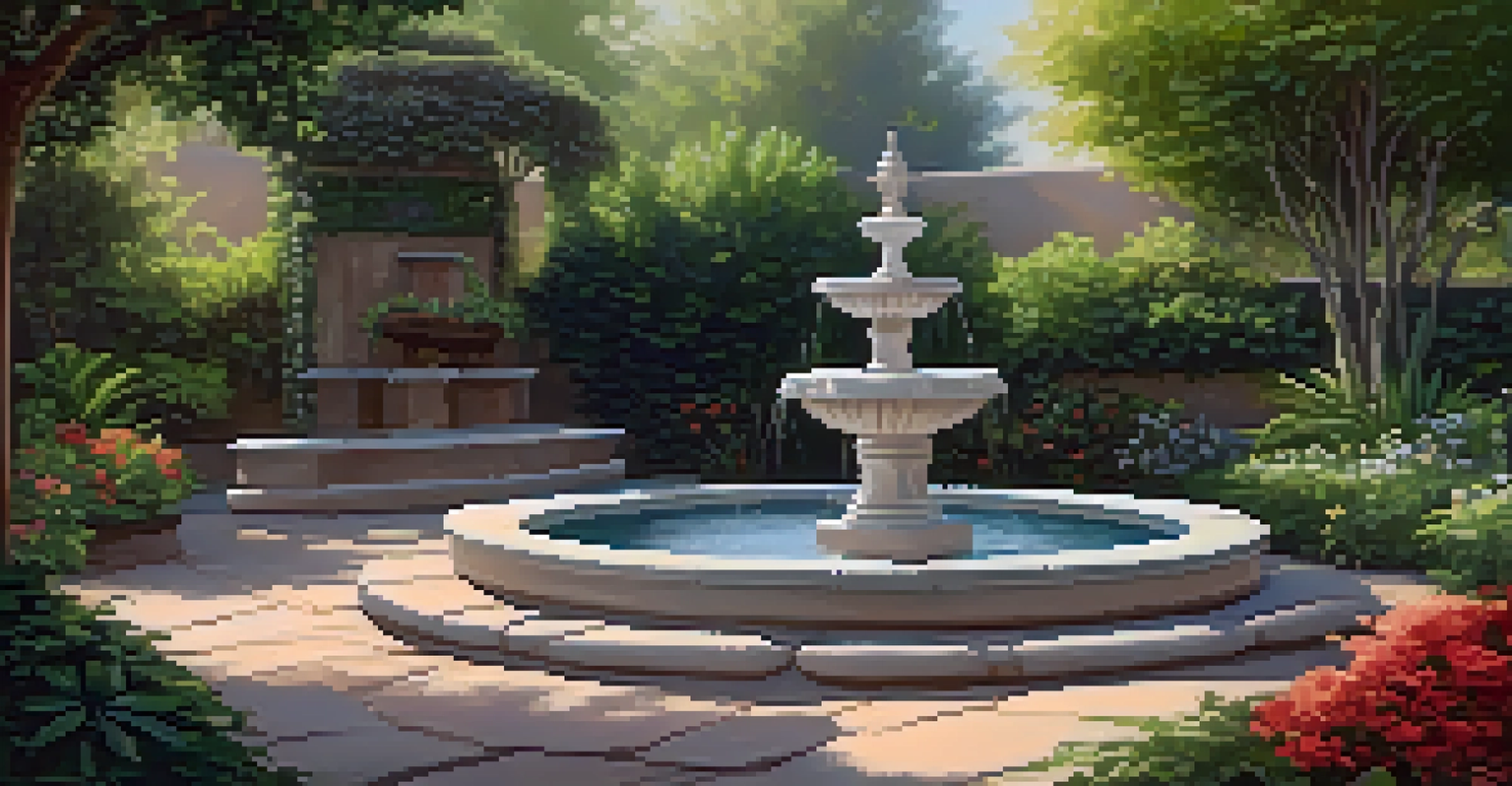Meditative Practices in Yoga for Creative Inspiration

Understanding the Connection Between Yoga and Creativity
Yoga is often seen as a physical practice, but its meditative aspects play a crucial role in unlocking creativity. When we engage in yoga, we learn to quiet the mind and tune into our inner selves, creating space for inspiration to flow. This connection between the mind and body fosters an environment where creativity can thrive.
Creativity is intelligence having fun.
Meditation in yoga encourages mindfulness, allowing practitioners to observe their thoughts without judgment. This process can lead to 'aha' moments, where new ideas and perspectives emerge. Just as a still pond reflects the sky more clearly than a choppy sea, a calm mind can reflect more creative insights.
Moreover, the principles of yoga—such as balance and harmony—can translate into our creative processes. By incorporating yoga's meditative practices, we can cultivate a mindset that embraces exploration and innovation, leading to a richer creative experience.
Breathing Techniques to Enhance Creative Flow
Breath control, or pranayama, is a fundamental aspect of yoga that can significantly enhance creative flow. By focusing on our breath, we can calm our nervous system and reduce stress, which often stifles creativity. Incorporating deep breathing exercises can create a sense of clarity, allowing ideas to surface more freely.

For instance, the '4-7-8' breathing technique involves inhaling for four counts, holding the breath for seven counts, and exhaling for eight counts. This practice not only promotes relaxation but also helps clear mental fog, making room for fresh creative thoughts. It’s like pressing a reset button for your mind.
Yoga Quietens the Mind for Creativity
Engaging in yoga cultivates a calm mind, creating a fertile environment for inspiration and creative thinking.
Engaging in regular pranayama can also improve concentration, making it easier to focus on creative tasks. As we become more attuned to our breath, we can use it as a tool to guide us through creative blocks, facilitating a smoother flow of ideas.
Visualization Techniques for Creative Inspiration
Visualization is a powerful technique used in both yoga and creative practices. By picturing our goals and desires, we can manifest them into reality. In a yoga context, this might involve visualizing a peaceful scene during meditation, which can evoke feelings of calm and openness, essential for creativity.
The mind is everything. What you think you become.
One effective visualization technique is to imagine your creative project as a vibrant, living entity. Picture the colors, textures, and emotions it evokes. This method not only inspires but also allows you to connect deeply with your creative vision, fostering a sense of ownership and motivation.
Additionally, practicing visualization during yoga can enhance our ability to think outside the box. As we merge mind and body through movement, we create a fertile ground for innovative ideas to sprout, transforming our creative processes in unexpected ways.
The Role of Mindfulness in Creative Thinking
Mindfulness, a core principle of yoga, is all about being present in the moment. This practice encourages us to engage fully with our thoughts and feelings, which can be incredibly beneficial for creativity. When we pay attention to the here and now, we open ourselves to new ideas and perspectives that might otherwise go unnoticed.
By integrating mindfulness into our daily routine, we can train our minds to be more receptive to inspiration. Simple practices like mindful walking or eating can enhance our awareness and spark creative thoughts. It’s about slowing down enough to appreciate the nuances of our experiences.
Breath Control Enhances Creative Flow
Practicing pranayama techniques helps reduce stress and mental fog, allowing fresh ideas to emerge more freely.
Moreover, mindfulness helps to reduce self-criticism, often a barrier to creative expression. By being kind to ourselves and our creative endeavors, we create a safe space for experimentation and exploration, ultimately nurturing our creative spirit.
Creating a Dedicated Space for Meditation and Creativity
Having a dedicated space for meditation and creative work can significantly enhance your practice. This space should be inviting and free from distractions, allowing you to fully immerse yourself in your yoga and creative activities. Think of it as your personal sanctuary where ideas can flourish.
Decorating this space with inspiring elements—such as artwork, plants, or calming colors—can set the right mood for creativity. Just like a musician tunes their instrument before a performance, creating a conducive environment helps tune your mind for creative expression.
Moreover, establishing a routine around this space can reinforce the connection between meditation and creativity. Whether it's morning yoga sessions or evening creative brainstorming, consistency helps signal to your mind that it’s time to explore and innovate.
Incorporating Movement to Stimulate Creativity
Movement is an integral part of yoga that can significantly stimulate creativity. Engaging in dynamic poses helps release physical tension, which can inhibit creative thinking. As we move our bodies, we also move our minds, allowing ideas to flow more freely.
Consider incorporating some creative movement practices, such as dance or free-form stretching, into your routine. These activities can help break down mental barriers and encourage spontaneity, much like a painter allowing their brush to dance across the canvas without a predetermined outcome.
Movement Sparks Creative Exploration
Incorporating dynamic movement into your routine releases physical tension, encouraging spontaneity and new perspectives in creativity.
In essence, movement can act as a catalyst for creativity, inviting new ideas and perspectives to emerge. By embracing the fluidity of movement in your creative practices, you allow your imagination to roam and explore, leading to richer outcomes.
Journaling: A Complementary Practice to Meditation
Journaling can serve as a powerful complement to yoga's meditative practices. This tool allows us to capture thoughts and ideas that arise during meditation, providing a tangible outlet for creative inspiration. By putting pen to paper, we can explore our inner reflections more deeply.
After a yoga session, take a few moments to jot down any insights or feelings that emerged. This practice can help solidify your creative thoughts and serve as a reference for future projects. It’s akin to planting seeds; the more you nurture them, the more they grow.

Additionally, journaling encourages self-expression and can help clarify our creative goals. By regularly documenting our thoughts and experiences, we build a personal archive of inspiration that can fuel our creative endeavors over time.